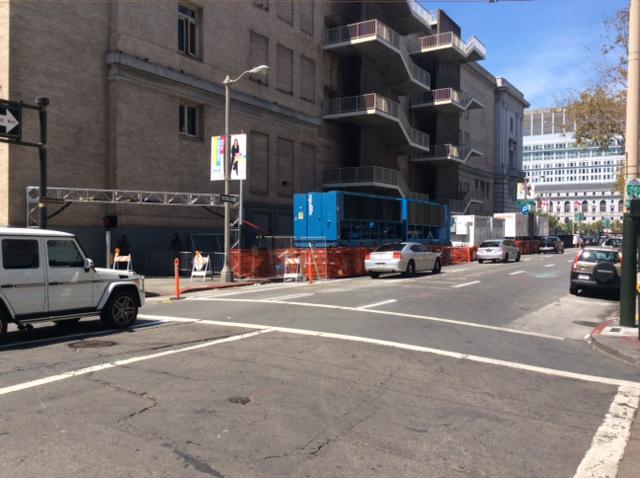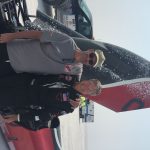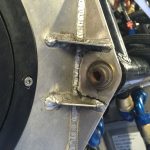Passenger cars are still the most popular transportation mode. In 2014 nearly 68m were produced globally.
They're not only a vital part of our economy and our personal lives but also an important social and cultural tool, used to present a certain image and status – real or imagined.
Our entrenched reliance on – and attachment to – this method of travel means that, even if we shift away from such widespread car ownership, we need to change our perception of what cars are if we want to mitigate their high environmental costs.
This doesn't just mean moving to electric vehicles. Just at the resource extraction level, roughly five tons of materials are needed to produce a 1.2 ton car, creating ten tons of effluents and 2.5 tons of emissions.
Processing these materials into components, assembling and distributing the cars around the world – and then using, servicing and disposing of them generates even more emissions. In total, a typical mid-size car is responsible for around 17 tons of CO₂.
The total embodied emissions for alternatively fuelled vehicles such as hybrids, electric and fuel-cell vehicles may even be higher than normal internal combustion engines – even when they produce no tail-pipe emissions (based on the as-yet unpublished Greet2 study).
This is perhaps because such technologies are more energy intensive to produce due to the materials that compose them.
New ideas needed
So what is the alternative to the current system? If car travel is going to remain common, perhaps we need to be smarter about how we build and use them. Our cars currently spend 92% of their time parked – and, when driving, most of their weight is used only to carry one person most of the time.
Cars could be produced in fewer numbers, to be smaller, longer-lasting and shared by more people. And instead of focusing on turning out as many new cars with relatively short lifespans as possible, manufacturers could provide more services to keep vehicles on the road for longer and deal with their disposal.
The role of car designers could also change. First by designing simpler basic cars, without "gimmicks" such as mood lights or massaging seats. Timeless lines rather than subject to the fads of the day.
Instead of working on one project after another, the designer could be involved in an upgrading process that would see each model evolve through re-manufacturing in a more direct interaction with consumers.

Gordon Murray Design T.27 RAC Future Car Challenge (Gimmick-free design? Dominic Alves, CC BY)
Other changes in the features of the cars themselves could also produce more sustainable models. For example, safety standards today are driven by electronic systems such as collision-avoidance and pedestrian-detection systems.
These could be upgraded during service life more easily than physical features. Based on my own (as yet unpublished) research, I believe that if these systems prove to be highly reliable, there will be no need for low-speed impact structures, reducing the use of materials.
This model might be easier to move to than it first sounds. So-called millennials are less interested in cars than previous generations, applying for driver's licences later in life and more likely to live in highly congested cities where access to public transport is easier.
They are also used to sharing or renting services, for example with taxi-hailing or liftsharing apps such as Uber. Owning a car, on the other hand, is seen as an expensive liability.
Industry turning point
The car manufacturing industry is also at a cross-roads. Powertrain options are multiplying, driverless technology is poised to make big changes and non-automotive companies including Google want a share of the market.
As materials become more expensive, relying on cars with relatively shorter lifespans to flood the market is not in anyone's interest. Not even the car makers, who at best can only make 5% annual profit.
The current business model may not survive in the longer term. It may naturally make more sense for manufacturers to build and service cars as long-lasting rental products.
Some electric vehicle manufacturers have already introduced rental schemes for their batteries, which are likely to need replacing far quicker than the rest of the car.
Extending the lifespan and the product life cycle will impact on production. Fewer cars means that the return on investment may take longer. But it could also mean less need to update costly manufacturing tools – and factories could be made more modular and flexible to produce different types of cars in one assembly line.
Plants could be more localised to meet the different needs of the different megacities of the future. And redundant assembly workers could be retrained into servicing and maintenance or other car-related services.
This model would require us to think differently about cars, redefining terms such as "old" and "used" and educating consumers, especially those from older generations who are unfamiliar with sharing systems.
Not all cars will survive into the future, but if we are better stewards of what we have now and learn to cherish products in a more subjective way than the market does, cars can definitely last for longer.
By Alexandre Rodrigues, a is PhD candidate at Nottingham Trent University. This article was originally published on The Conversation. Read the original article.
More on car technology
Criminals can use this cheap device to unlock your car or garage
What to do if your vehicle number plate is cloned
Google has its own car company
Watch how easy it is for criminals to jam your car remote
Hackers can remotely hijack the Jeep Cherokee
Source:
The future of car technology
![Eigg, an island in Hebrides off the coast of Scotland. [Photo by Flickr user kevinzim] Eigg, an island in Hebrides off the coast of Scotland. [Photo by Flickr user kevinzim]](http://images.thecarconnection.com/med/eigg-an-island-in-hebrides-off-the-coast-of-scotland-photo-by-flickr-user-kevinzim_100457139_m.jpg)



 The Venturi and The Ohio State University team on the salt at Bonneville, August 2015. Venturi Automobiles
The Venturi and The Ohio State University team on the salt at Bonneville, August 2015. Venturi Automobiles 









 The Audi e-tron quattro concept car
The Audi e-tron quattro concept car  The Audi A3 e-tron Sportback
The Audi A3 e-tron Sportback 






